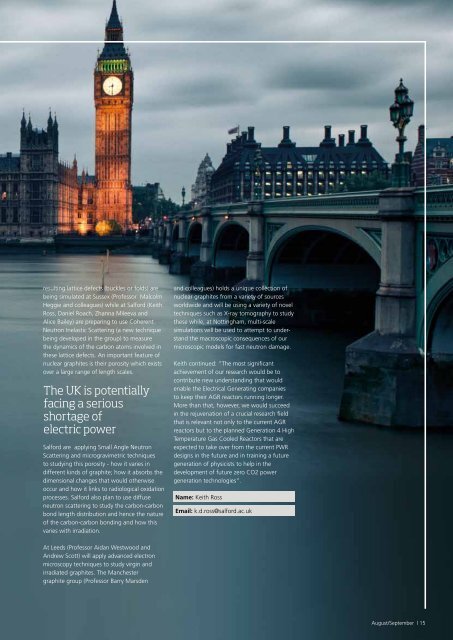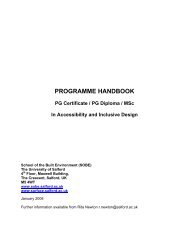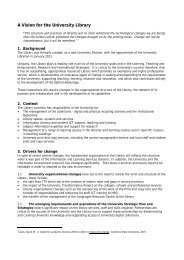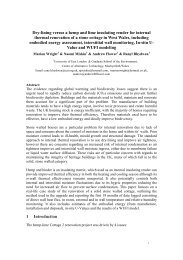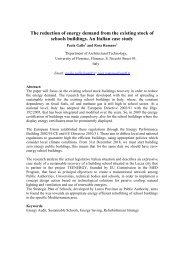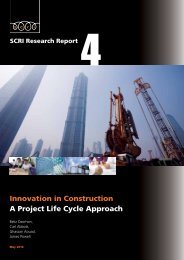RISE August-September 2011 - University of Salford
RISE August-September 2011 - University of Salford
RISE August-September 2011 - University of Salford
Create successful ePaper yourself
Turn your PDF publications into a flip-book with our unique Google optimized e-Paper software.
esulting lattice defects (buckles or folds) are<br />
being simulated at Sussex (Pr<strong>of</strong>essor Malcolm<br />
Heggie and colleagues) while at <strong>Salford</strong> (Keith<br />
Ross, Daniel Roach, Zhanna Mileeva and<br />
Alice Bailey) are preparing to use Coherent<br />
Neutron Inelastic Scattering (a new technique<br />
being developed in the group) to measure<br />
the dynamics <strong>of</strong> the carbon atoms involved in<br />
these lattice defects. An important feature <strong>of</strong><br />
nuclear graphites is their porosity which exists<br />
over a large range <strong>of</strong> length scales.<br />
The UK is potentially<br />
facing a serious<br />
shortage <strong>of</strong><br />
electric power<br />
<strong>Salford</strong> are applying Small Angle Neutron<br />
Scattering and microgravimetric techniques<br />
to studying this porosity - how it varies in<br />
different kinds <strong>of</strong> graphite; how it absorbs the<br />
dimensional changes that would otherwise<br />
occur and how it links to radiological oxidation<br />
processes. <strong>Salford</strong> also plan to use diffuse<br />
neutron scattering to study the carbon-carbon<br />
bond length distribution and hence the nature<br />
<strong>of</strong> the carbon-carbon bonding and how this<br />
varies with irradiation.<br />
and colleagues) holds a unique collection <strong>of</strong><br />
nuclear graphites from a variety <strong>of</strong> sources<br />
worldwide and will be using a variety <strong>of</strong> novel<br />
techniques such as X-ray tomography to study<br />
these while, at Nottingham, multi-scale<br />
simulations will be used to attempt to understand<br />
the macroscopic consequences <strong>of</strong> our<br />
microscopic models for fast neutron damage.<br />
Keith continued: “The most significant<br />
achievement <strong>of</strong> our research would be to<br />
contribute new understanding that would<br />
enable the Electrical Generating companies<br />
to keep their AGR reactors running longer.<br />
More than that, however, we would succeed<br />
in the rejuvenation <strong>of</strong> a crucial research field<br />
that is relevant not only to the current AGR<br />
reactors but to the planned Generation 4 High<br />
Temperature Gas Cooled Reactors that are<br />
expected to take over from the current PWR<br />
designs in the future and in training a future<br />
generation <strong>of</strong> physicists to help in the<br />
development <strong>of</strong> future zero CO2 power<br />
generation technologies”.<br />
Name: Keith Ross<br />
Email: k.d.ross@salford.ac.uk<br />
At Leeds (Pr<strong>of</strong>essor Aidan Westwood and<br />
Andrew Scott) will apply advanced electron<br />
microscopy techniques to study virgin and<br />
irradiated graphites. The Manchester<br />
graphite group (Pr<strong>of</strong>essor Barry Marsden<br />
<strong>August</strong>/<strong>September</strong> | 15


